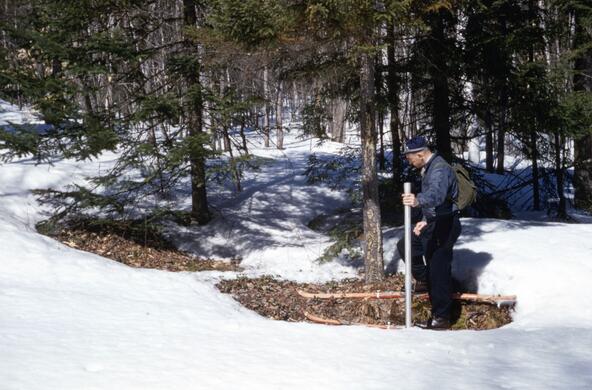Bringing carbon dioxide concentrations in the atmosphere down to preindustrial levels will be a daunting task, including reducing current emissions and removing the CO2 that has accumulated from past emissions. The costs of rapid climate change demand that we do so.
Yet, I marvel at some schemes proposed to achieve these reductions, including enhanced rock weathering and the spreading of charcoal on agricultural lands. A new recent proposal left me especially dumbfounded—the harvest and burial of 4.5% of the Earth’s plant productivity to prevent its decomposition, sequestering 27% of current annual fossil fuel emissions. The authors show convincing evidence that logs buried in anaerobic conditions (without oxygen) can persist in the soil for more than 1000 years and store carbon.
Photosynthesis is a remarkable process for removing carbon dioxide from the atmosphere, capturing it in leaves, wood and roots. In the typical forest, only about 20% of the net primary production appears in woody increment. So, a harvest of 4.5% of the Earth’s total plant productivity (NPP) would increase to over 23% if we were to expect to capture it in logs for burial. Currently about 2% of fossil fuel emissions are captured each year in long-lived products that store carbon—housing, furniture, caskets etc. With timber being a valuable commodity, can we really expect that 14 times that amount might be diverted to burial as a carbon sink?
The authors estimate that the cost of wood harvest and burial might be in the range of $30 to $100 per ton of CO2—competitive with some other methods of capturing carbon dioxide. Presumably, these costs would be paid to landowners by government subsidies to promote carbon storage. But, the current value of sawlogs (of equivalent C content) is often greater than those amounts; can we really expect the forest products industry to divert a significant fraction of its harvest from sale to burial?
My questions focus on the efficacy of carbon sequestration projects. Climate change is real and serious, but solutions need to be practical and economically attractive if they are to compete in a world of increasing societal demand for wood products.
References
Johnston, C.M.T. and V.C. Radeloff, 2019. Global mitigation potential of carbon stored in harvested wood products. Proceedings of the National Academy of Sciences 116: 14526-14531.
Whittaker, R.H. and P.L. Marks. 1975. Methods of assessing terrestrial productivity. Pp. 55-118. In H. Lieth, and R.H. Whittaker (eds.). Primary Productivity of the Biosphere. Springer, New York.
Zeng, N., X. Zhao, C. Poisson, B. Clifford, Y. Liu, H. Liu, T. Meng, L. Picard, E.Z. Mariotti, B. Zaitchik and L. Hu. 2024. 3775-year-old wood burial supports “wood vaulting” as a durable carbon removal method. Science 385: 1454-1459.








